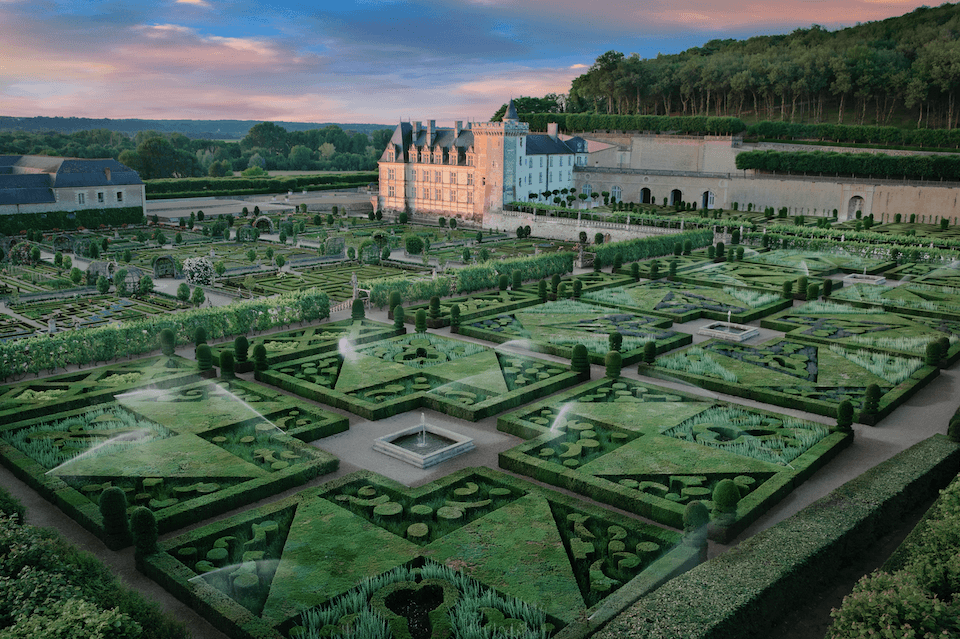The scale of these gardens was so sweeping that when I climbed the final step to the top of the belvedere, I drew a breath. The size, yes, but also the remarkable attention to detail. Hemmed in on all sides—by a storybook village, a 12th-century church, a forest, and its namesake château, the gardens at Villandry spread, lovely and ornate, reaching across 22 acres. Just below, gardens devoted to love, complete with broken hearts, mazes to signify the dance and whirlwind of passion, and even blades and swords to indicate its tragedy. Plus, labyrinths, ornamental gardens, kitchen gardens, and water gardens, built to reflect the heavens above.
After rambling around above, and then down on a network of paths that meandered among all the perfectly coiffed greenery, a church bell sounded out, reminding me it was almost time for lunch. Making my way back to the car park, I saw a man walking toward a work truck. I had read that maintaining the gardens at Villandry required the best efforts of 10 full-time gardeners, and as he was dressed casually, I assumed he was one of them. Pruning takes place all winter long—maybe he was just finishing up his morning and headed to his own hot lunch?




